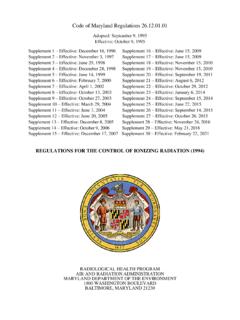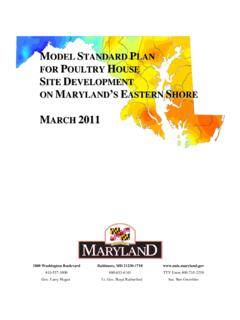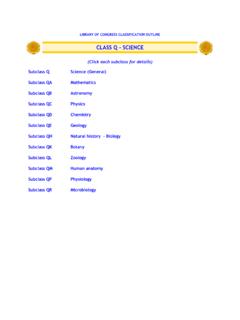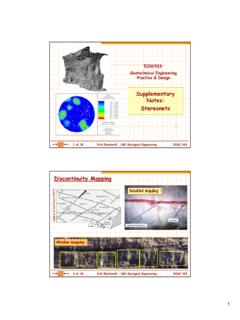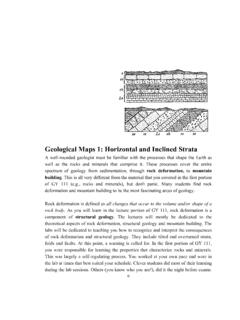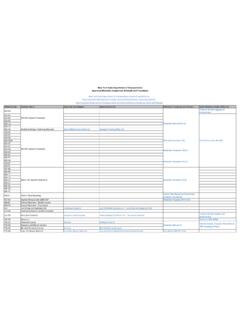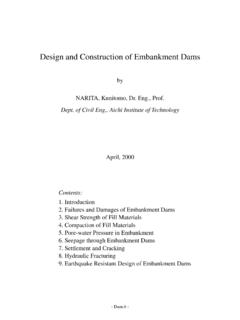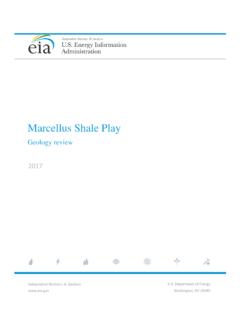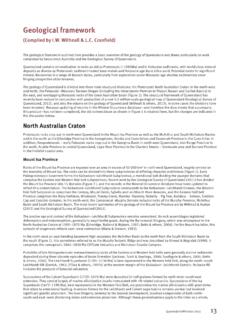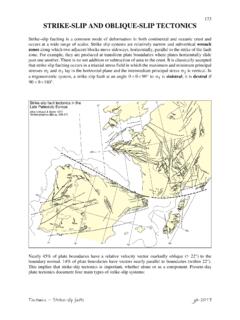Transcription of Environmental Site Design - Maryland
1 Chapter Environmental Site Design Chapter 5. Environmental Site Section Introduction Background The primary goal of Maryland s stormwater management program is to maintain after development, as nearly as possible, the predevelopment runoff characteristics. Traditional stormwater management strategies treat runoff to mitigate adverse water quality and/or quantity impacts associated with new development.
2 Designs applying these strategies often combine centralized structural practices for pollutant removal with channel erosion or flood control impoundments. These designs are less able to mimic predevelopment conditions because they focus on managing large volumes of polluted stormwater rather than treating runoff closer to the source. A comprehensive Design strategy for maintaining predevelopment runoff characteristics and protecting natural resources is available. This strategy, known as Environmental Site Design or ESD, relies on integrating site Design , natural hydrology, and smaller controls to capture and treat runoff. This chapter provides the foundation to refocus stormwater Design from centralized management to more effective planning and implementation of ESD. Requirements of the Stormwater Management Act of 2007 The Stormwater Management Act of 2007 (Act), requires establishing a comprehensive process for stormwater management approval, implementing ESD to the maximum extent practicable (MEP), and ensuring that structural practices (see Chapter 3) are used only where absolutely necessary.
3 The Act also establishes several performance standards for stormwater management plans. Designers must now ensure that these plans are designed to: Prevent soil erosion from development projects. Prevent increases in nonpoint pollution. Minimize pollutants in stormwater runoff from both new development and redevelopment. Restore, enhance, and maintain chemical, physical, and biological integrity of receiving waters to protect public health and enhance domestic, municipal, recreational, industrial and other uses of water as specified by MDE. Maintain 100% of the average annual predevelopment groundwater recharge volume. Capture and treat stormwater runoff to remove pollutants. Implement a channel protection strategy to protect receiving streams. Prevent increases in the frequency and magnitude of out-of-bank flooding from large, less frequent storms.
4 Protect public safety through the proper Design and operation of stormwater management facilities. The Act presents a new opportunity to improve Maryland s stormwater management program. The original Chapter 5 encouraged ESD through a series of optional credits for the Design of nonstructural practices. Changes in response to the Act not only expand on the ESD practices first introduced in the Manual but also allow for planning techniques to improve implementation NOTE: In this chapter, italics indicate mandatory criteria, whereas recommended criteria are shown in normal typeface. Chapter 5. Environmental Site and overall performance. The remaining sections of this chapter will further define ESD, discuss planning techniques used in its implementation, and provide Design requirements for nonstructural and micro-scale practices used to treat runoff at the source.
5 For reference purposes, the original Chapter 5 can be found in Appendix Environmental Site Design Definition There are many stormwater Design strategies that seek to replicate natural hydrology. Sometimes known as better site Design , low impact development, green infrastructure, or sustainable site Design , these strategies all espouse similar techniques. In each, a combination of planning techniques, alternative cover, and small-scale treatment practices is used to address impacts associated with development. For consistency, the Act adopts ESD as a more generic classification for use in Maryland . Title 4, Subtitle (B) of the Act defines ESD as ..using small-scale stormwater management practices, nonstructural techniques, and better site planning to mimic natural hydrologic runoff characteristics and minimize the impact of land development on water resources.
6 Under this definition, ESD includes: Optimizing conservation of natural features ( , drainage patterns, soil, vegetation). Minimizing impervious surfaces ( , pavement, concrete channels, roofs). Slowing down runoff to maintain discharge timing and to increase infiltration and evapotranspiration. Using other nonstructural practices or innovative technologies approved by MDE. Impacts of Imperviousness The goal of traditional site Design strategies is to maximize development potential by focusing on the layout of buildings, roads, parking, and other features. Conventional development practices tend to maximize site imperviousness and contribute to many of the impacts discussed in Chapter 1. These include diminished groundwater recharge, increased flows and runoff volumes, pollutant accumulation, and elevated water temperatures.
7 Documentation such as the Impacts of Impervious Cover on Aquatic Systems (Center for Watershed Protection, 2003) and other studies of Eastern Piedmont and Coastal Plain streams in Maryland (Morgan and Cushman, 2005) and headwater streams in Montgomery County (Moore and Palmer, 2005) all indicate that stream biodiversity decreases as impervious cover increases. There is no simple formula, rule, or threshold for determining how much impervious cover may be sustained in a given watershed. Generally, stream quality and watershed health diminish when impervious cover exceeds 10% and become severely degraded beyond 25% (Center for Watershed Protection, 2003). Results from the Maryland Biological Stream Survey (MBSS) indicated that in surveyed streams, health was never good when watershed imperviousness exceeded 15%, (Boward, 1999).
8 These studies establish a fundamental connection between impervious cover and watershed impairment. Supp. 1 Chapter 5. Environmental Site Integrating the fundamental principles of ESD during the planning process helps minimize the adverse impacts of imperviousness. The resulting designs reduce the need for costly infrastructure and maintenance while providing treatment closer to the source. To accomplish this, the designer must consider the basic concepts found in Section , Planning 5.
9 Environmental Site Design Process and Planning Section Design Process and Planning Techniques Introduction The Design process described in this section will provide guidance for implementing ESD planning strategies and practices into a comprehensive site development plan. These techniques involve protecting natural resources, integrating erosion and sediment controls with stormwater management practices, minimizing site imperviousness, and using natural conveyance and ESD practices throughout the site. Applying these techniques early in the Design process will ensure that all available resources have been considered in order to protect streams and waterways from the impact of land development activities. The Design process will require the developer to adhere to the following procedures to achieve ESD to the MEP: Following the Design Process for New Development as outlined in the step wise procedures in Figure Developing a map that identifies natural resource areas and drainage patterns and devising strategies for protection and enhancement.
10 Minimizing total site imperviousness by implementing clustered development and other better site Design techniques. Demonstrating that all reasonable opportunities for meeting stormwater requirements using ESD have been exhausted by using natural areas and landscape features to manage runoff from impervious surfaces and that structural BMPs have been used only where absolutely necessary. Participate in the comprehensive review process for interim plans review and approval at the conceptual, site development, and final phases of project Design . Integrating strategies for erosion and sediment control and stormwater management into a comprehensive development plan. Comprehensive Erosion & Sediment Control and Stormwater Management Review The Act requires that a comprehensive process for approving grading and sediment control plans and stormwater management plans shall be established.




